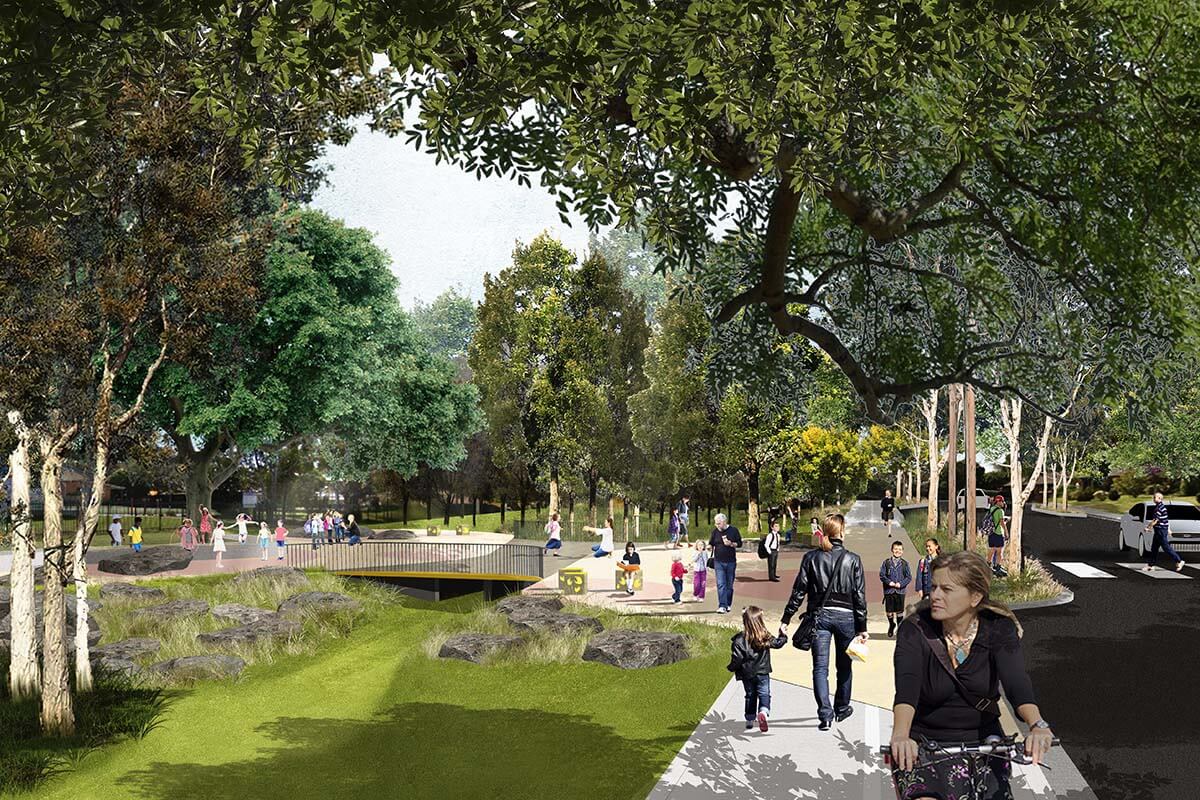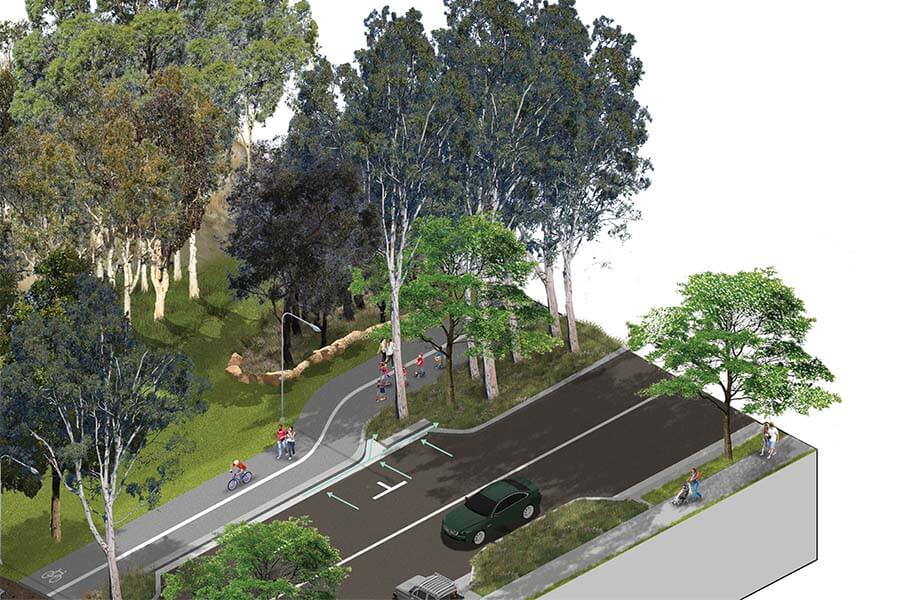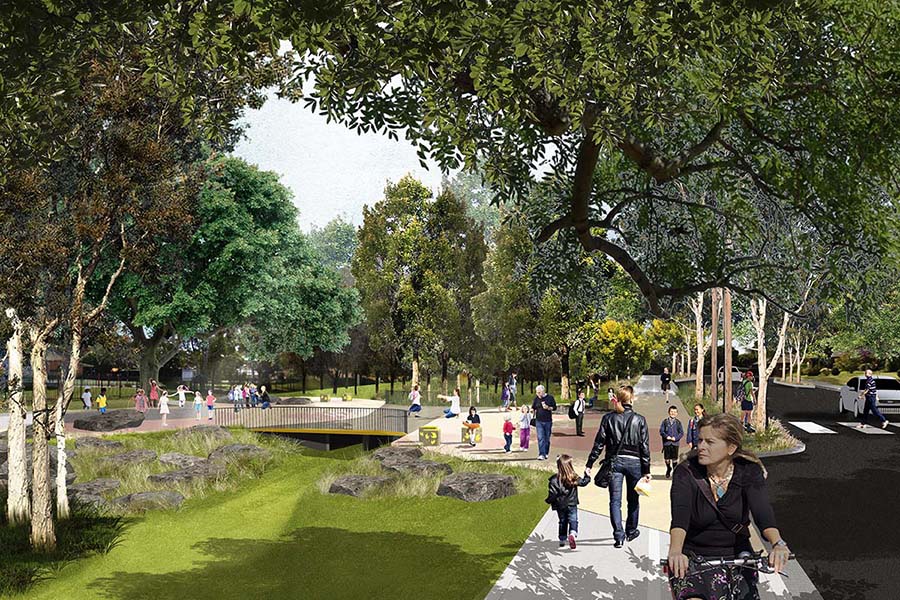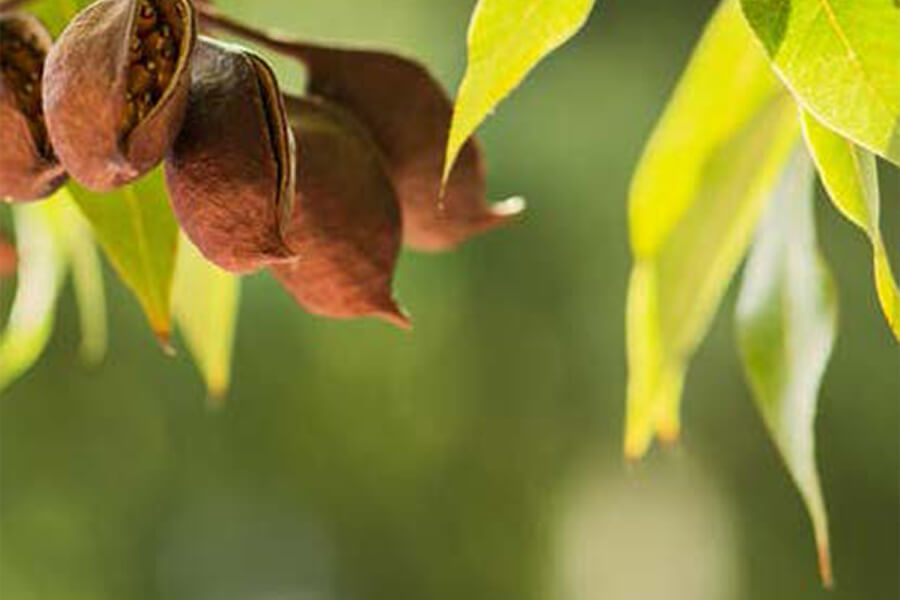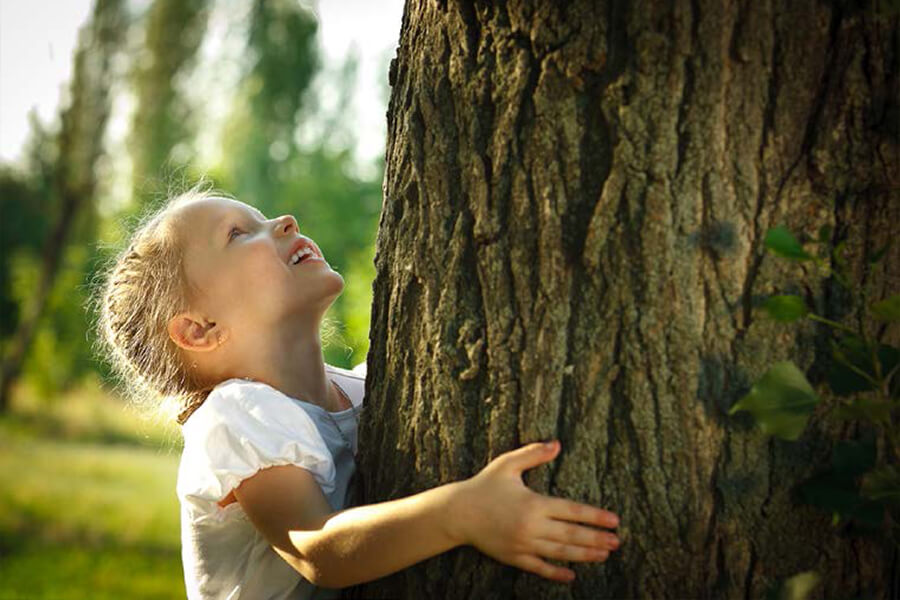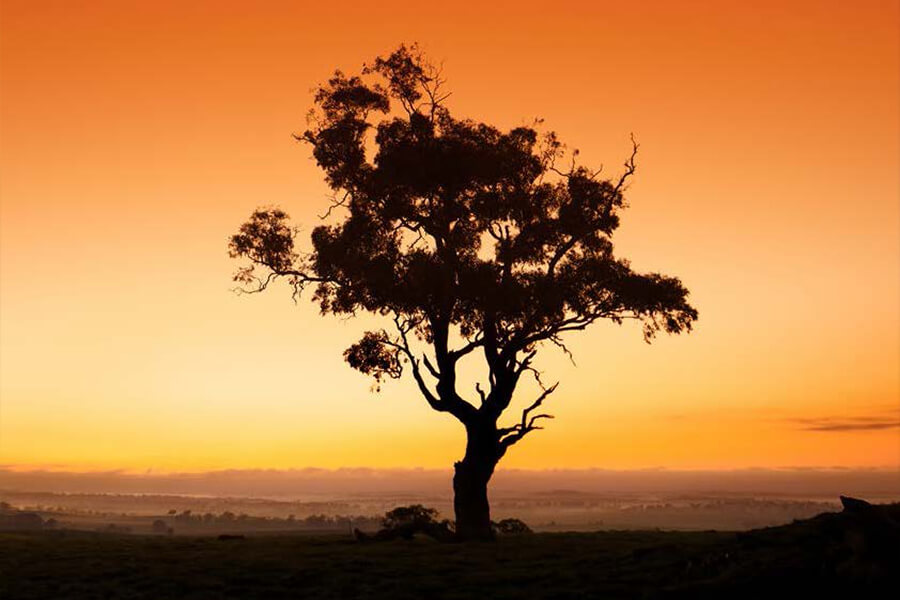Increasing tree canopy cover is important for climate change adaptation in urban areas. Trees provide shade, cooling, contribute to improved storm water management and urban amenity.
The urban heat island effect in Western Sydney is a major challenge that affects the health and wellbeing of the community. Increasing tree canopy cover in urban areas is a way to mitigate the urban heat island effect to create cooler communities and a more liveable future.
Launched in July 2019, Rosemeadow was an innovative project that set a new benchmark for tree planting in urban environments to improve liveability for communities in areas with critical urban heat problem.
Purpose of the project
Project overview
Extensive community consultation was undertaken to ensure the successful delivery of the project. The local community, including residents and schools were actively involved in the design of streets, open spaces and the planting of trees.
Between 2020–2021 the project was impacted by drought, bushfires and COVID-19 restrictions. In 2021, Campbelltown City Council informed the community about upcoming tree planting activities in their local area.
With research from REALMstudios, E2DesignLab and Spiire, the project explored integrated stormwater management and its role in supporting passive irrigation and a healthy urban tree canopy, along with research partners, Macquarie, Western Sydney University and Royal Botanic Garden Sydney.
Between 2021 and 2022, the project completed tree planting on Copperfield Drive. The program is continuing with further public domain tree planting and a resident "request a tree" program, due for completion in March 2024.
Methodology framework
In collaboration with Campbelltown City Council, the department commissioned 3 design documents to demonstrate industry best-practice and showcase the methodology, learnings and outcomes of the project.
These documents are intended for use by councils and industry to replicate for tree plantings on streets, reserves and in open spaces.
Green Innovations Webinar
In October 2021, the department held a webinar showcasing three different scales of projects where innovative approaches to using stormwater have been adopted and help provide improved outcomes for trees.
If you missed the session, you can view the webinar recording.
More information
To find out more about the project please contact the project team at [email protected].
